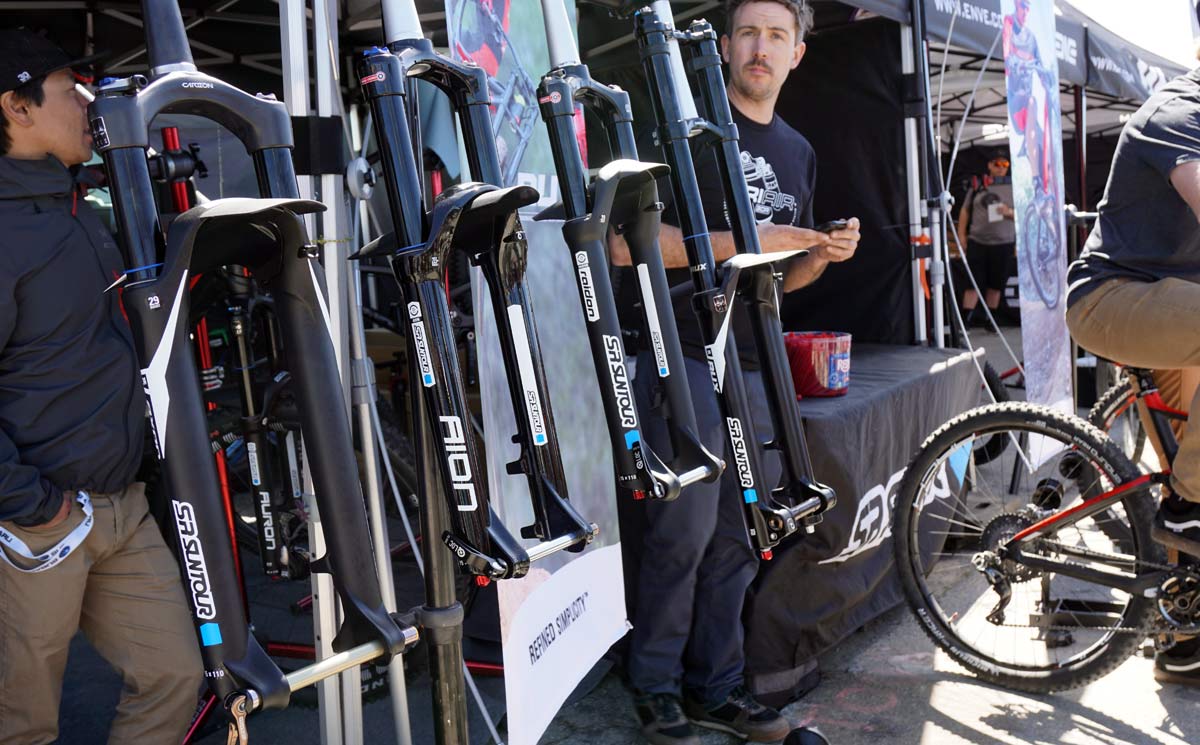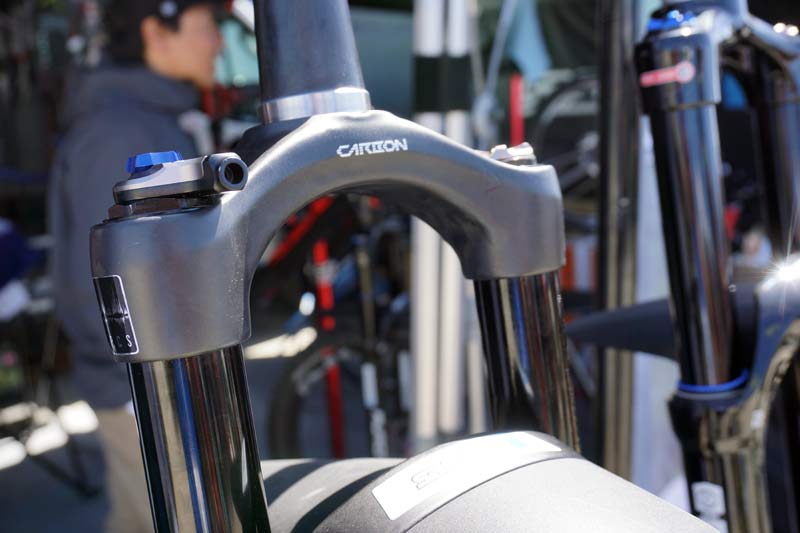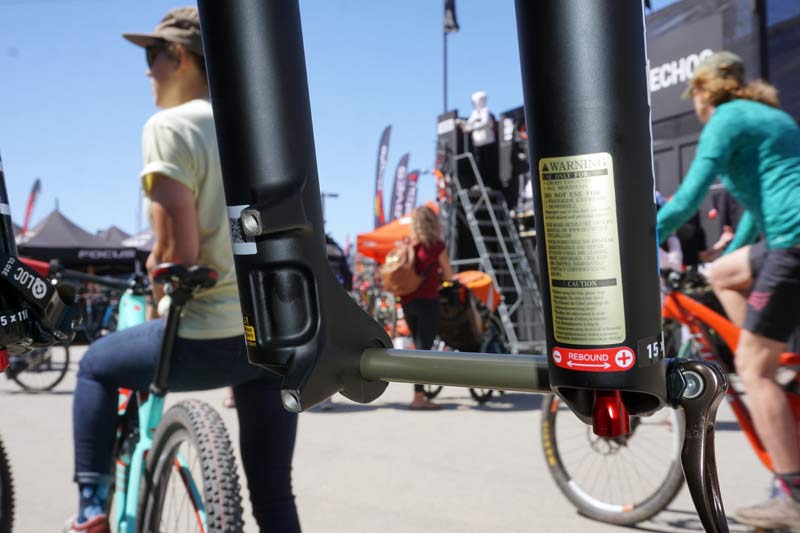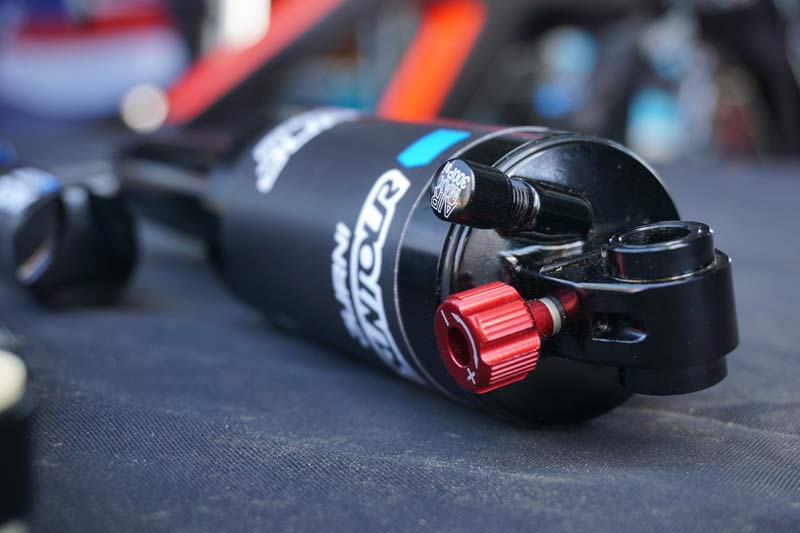SR Suntour has long had a carbon fiber XC fork, but it used an alloy crown and steerer with carbon fiber lowers. That version has been raced at the World Cup level for years, along with marathon racing and more. For 2018-19, it gets a complete overhaul and flip-flops the carbon position. The new Axon Werx has a carbon crown and steerer with magnesium lowers.
It’s lighter than the prior version, coming in at a claimed 1,580g for a Boost 29er. Travel can be up to 120mm, adjustable in 10mm increments with internal pucks. Action comes from a positive air with coil negative spring, but they’re working on a version with an air negative spring, too, with a separate valve to let you custom tune the ride. Here’s a quick video overview of this and more new products:
In other fork news, the dual-crown RUX 38 gets upgraded RC2 cartridge, replacing the R2C2, and an integrated fender. That means high speed rebound is now fixed internally rather than providing an external adjustment for that. This is a move they made earlier this year on the Durolux to simplify controls with things more riders are likely to get real benefit from.
Speaking of the Durolux, both the 27.5 and 29 models get a slight redesign to the chassis to save a bit of weight. Those prior changes? They also reworked the internals to provide better action, too. Full details on that update here.
2018-19 SR Suntour rear shocks
The new SR Suntour Jurni DH Air shock uses a piggyback reservoir with an air backed IFP, not nitrogen, which lets you tune the initial bit of stroke.
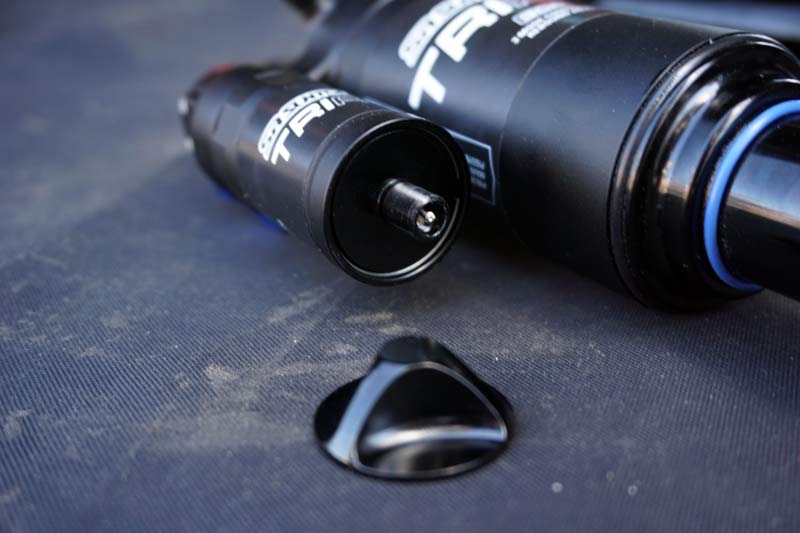
They say the initial setting is recommended around 15bar (220psi), but you can go up to about 240psi. The differences will be really subtle, but for pros it’s an added way to shave thousandths of a second off their runs. Technically, you’d want to run lower pressure to improve small bump compliance. The IFP’s pressure is pushing back against the damping fluid, helping it quickly flow back through the rebound circuit and maintaining an air-free environment. So more pressure means it takes more initial force to initiate movement, which could be used to offset lower compression damping. The point is, it gives you options…assuming you know what you’re doing.
The TriAir all-mountain/enduro rear shock gets it, too, hence the “tri” part of its model name. More important are changes to the damping. Now there are only six clicks of low speed rebound, and five for compression, but with improvements to the performance within that range.
